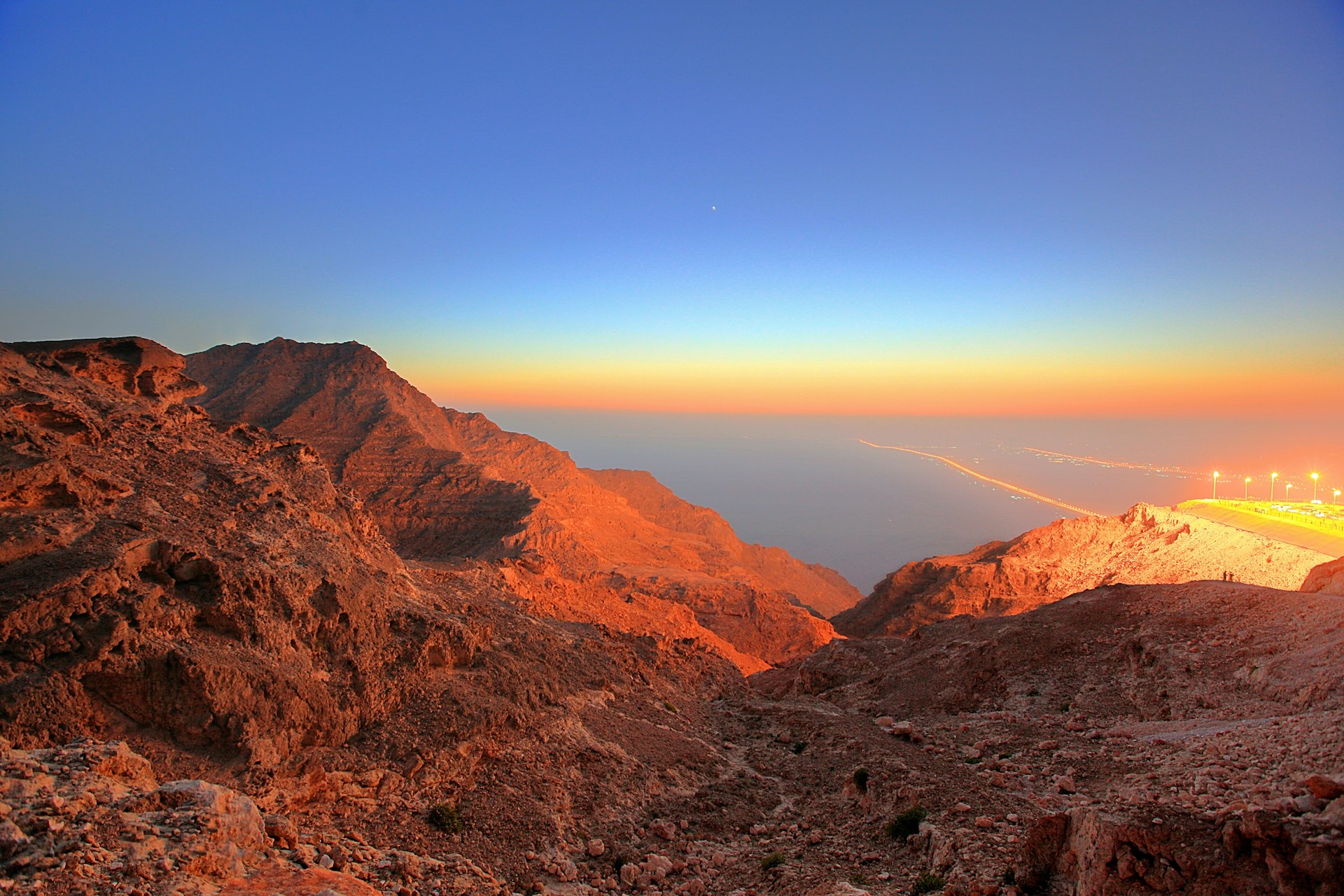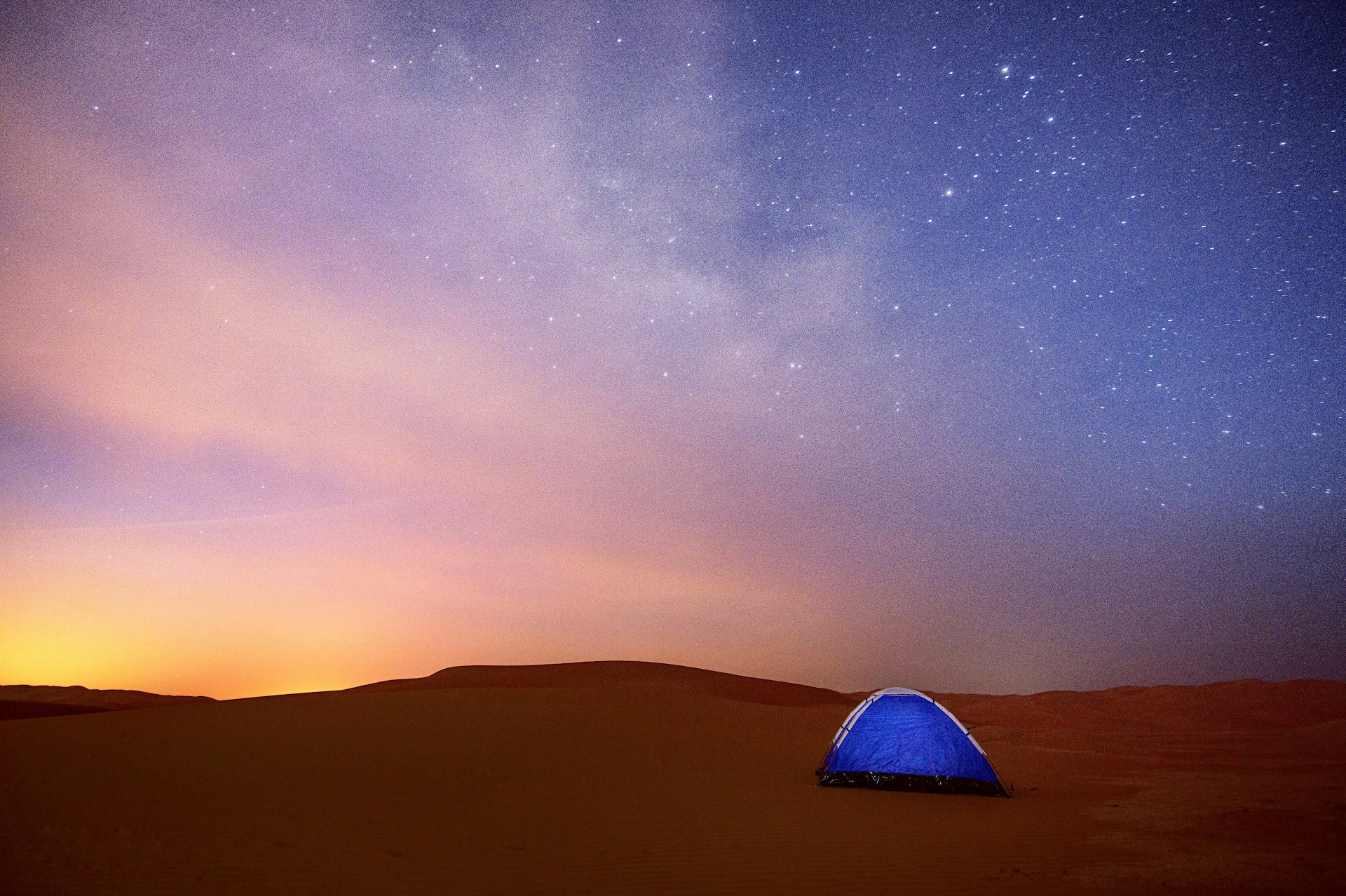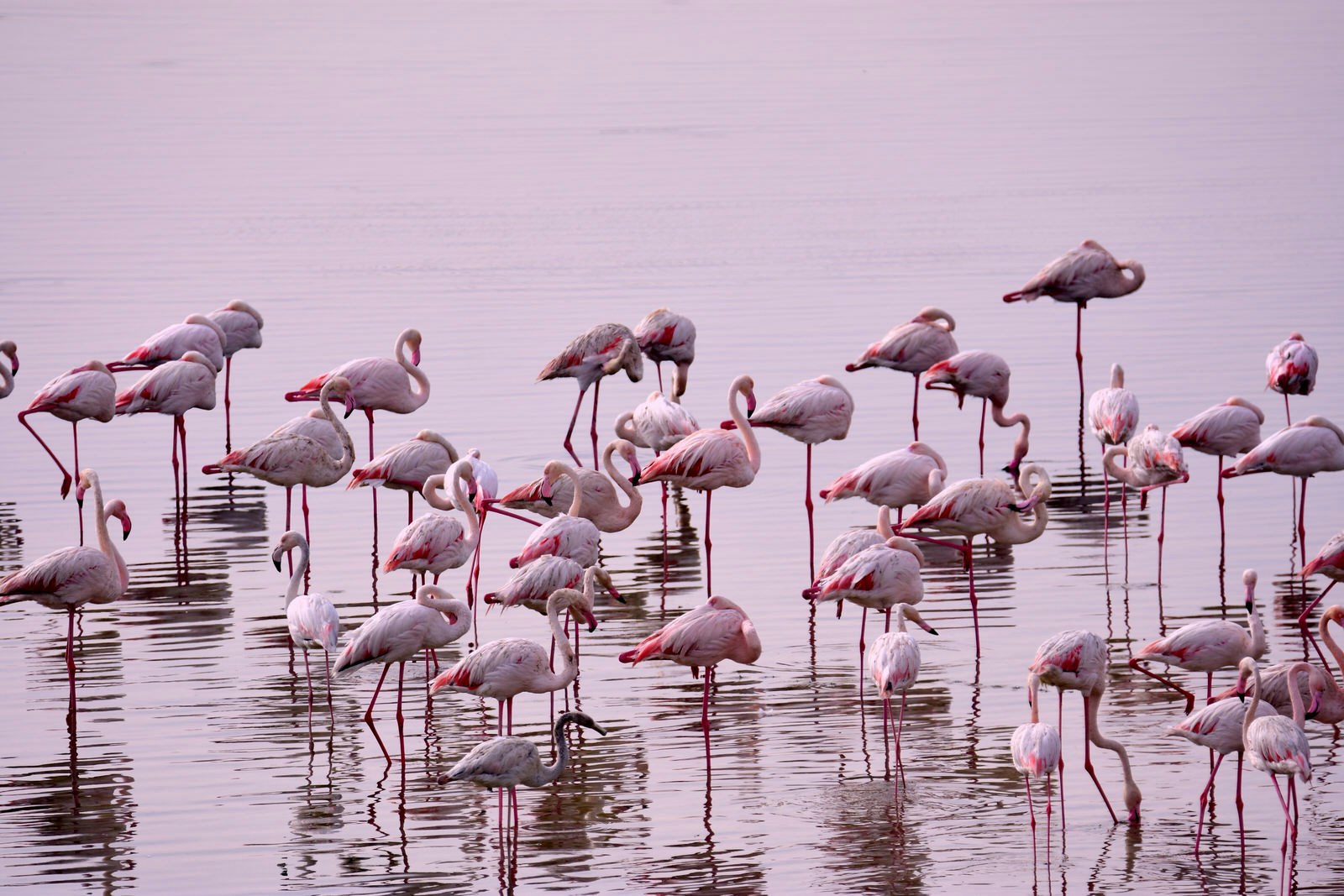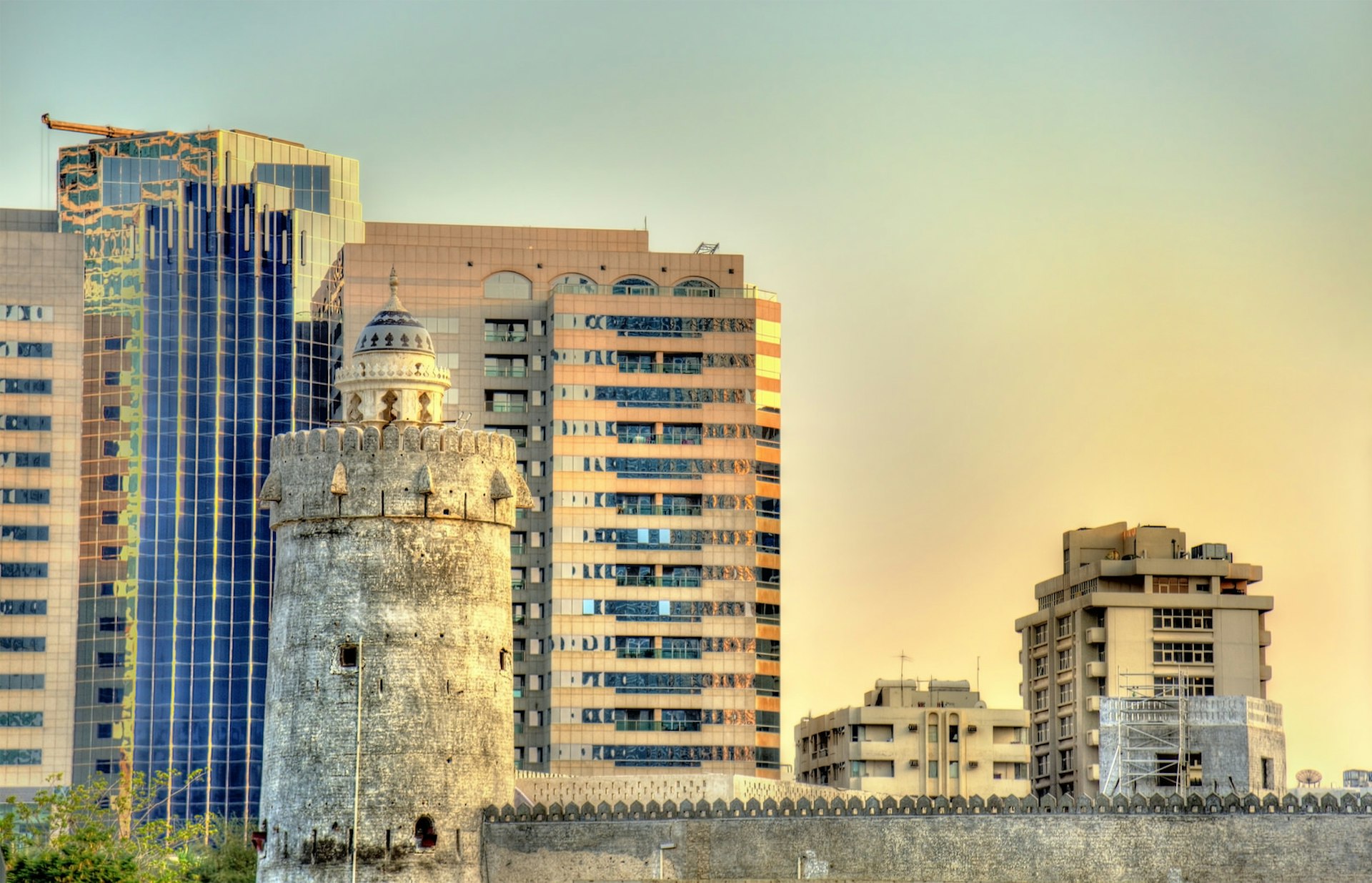Often synonymous with glitz and glam, Abu Dhabi might seem like a destination tailored exclusively to upscale travelers. However, beneath its futuristic facade lies a treasure trove of free things to do, catering to even the most budget-conscious travelers.
The United Arab Emirates’ capital has a plethora of sights and outdoor attractions that don’t demand a hefty price tag. From strolling along the picturesque Corniche at sunset to exploring Emirati art at the Cultural Foundation, Abu Dhabi presents an array of activities that allow visitors to soak in its charm without breaking the bank.
Here’s our guide to the best free things to do in Abu Dhabi.
1. Take a self-guided walking tour of downtown Abu Dhabi
A journey through downtown Abu Dhabi is best experienced on foot. Free self-guided audio tours offer a deep dive into the history of the city’s urban fabric and its hyper-rapid growth over the past five decades. Meander through the lively city streets, where each corner reveals a blend of global architectural styles, a testament to the multicultural nature of the country at large.
Highlights include the iconic Qasr Al Hosn, the oldest stone building in the capital, the bustling souq and the iconic late-night cafes that continue to make some of Abu Dhabi’s most cherished street foods.
2. Engage in interfaith dialogues at the Abrahamic Family House
Opened in 2023, the Abrahamic Family House is a unique complex built to symbolize religious harmony and the country’s commitment to fostering a multicultural and inclusive society. Each religious space – there’s a mosque, a synagogue and a church – while distinct in its religious symbolism and architectural style, harmoniously aligns with one another to create a unified but diverse complex.
The Abrahamic Family House is not just a place of worship. It’s also a center for learning and dialogue with regular interfaith events, cultural programs, and public talks to foster understanding and respect among different communities of faith.
Planning tip: To fully appreciate each space’s intricate design and significance, consider booking a free guided tour.

3. Admire the symmetry and intricacies of the Sheikh Zayed Grand Mosque
An architectural wonder, the Sheikh Zayed Grand Mosque was completed in 2007 and houses the mausoleum of the founding father of the United Arab Emirates and the mosque’s namesake, Sheikh Zayed I. While entry to the mosque is free, visitors must pre-book their entry tickets online. A 45-minute guided tour unravels the mosque’s intricate architectural details and historical significance.
As sunlight dances on the pristine white marble exterior, the mosque’s 82 domes and over 1000 columns – many of which feature intricate floral filigree inlaid with amethyst, lapis lazuli, abalone and other semi-precious stones – and the world’s largest hand-knotted carpet, unfold a story of artistic genius. Pay particular attention to the seven stunning stainless steel and 24-karat galvanized gold crystal chandeliers that adorn the prayer halls and foyers. Their upturned palm-tree shape symbolizes the country’s livelihood and prosperity.
Planning tip: A paid late-night tour of the mosque, which runs from 10pm to 5am, is ideal if you’re visiting Abu Dhabi on a long overnight stopover.
4. Appreciate local art at 421 Arts Campus
Located in a former port warehouse in the historic Mina Zayed neighborhood, 421 Arts Campus showcases a rotating series of exhibits by emerging local and regional MENA artists. The campus also houses co-working spaces, a cafe and a library. Check out the website for free film screenings, artist talks, and immersive workshops.
Planning tip: Can’t get enough art? Make sure to also visit the contemporary exhibits at the Etihad Modern Art Gallery and the NYU Abu Dhabi Art Gallery.
5. Explore earthen architecture at Al Jahili Fort
Built in 1891, Al Jahili Fort in Al Ain offers a glimpse of Abu Dhabi’s bygone era. Initially serving as the royal summer residence of Sheikh Zayed I, the fort went on to become the headquarters of the British military in the 1950s.
Today, the restored fort is a stunning example of sustainable indigenous architecture. A key highlight is the permanent exhibit displaying photographs by Sir Wilfred Thesiger, an intrepid British explorer known for crossing the expansive Empty Quarter desert twice in the 1940s.
6. Soak up the sun at Al Hudayriyat Beach
If the energetic pulse of Abu Dhabi feels too overwhelming, make your way to Al Hudayriyat Beach for a refreshing change of pace. Stroll along the pristine stretch of powdery white sand and take in the panoramic views of the Arabian Gulf on the horizon. The beachfront promenade also features cycle paths, a skate park, an outdoor gym, boutiques and several dining options.
Local tip: Looking to escape the crowds? Head to Shipwreck Beach in Al Ruwais for an even quieter beach getaway.

7. Hike Jebel Hafeet mountain
When the call of adventure beckons, head to the rugged trails of Jebel Hafeet, Abu Dhabi’s highest peak. As you hike the winding paths of this majestic mountain, each step unveils breathtaking vistas of the vast desert expanse and craggy terrain. Be sure to start off early in order to beat the heat, as there’s no shade along the trail.
Local tip: The area is also home to a collection of approximately 500 ancient beehive-shaped tombs that date as far back as 2500 BCE. Now part of Al Ain’s UNESCO World Heritage site, these Bronze Age relics provide an important look at sea trading routes and the life of this region’s early inhabitants.
8. Walk along the Corniche
The Corniche is a splendid fusion of Abu Dhabi’s quintessential modernity and rich cultural heritage. As you meander along this scenic waterfront promenade that stretches for 8km (5 miles) along the city’s northwestern shore, keep your camera ready to capture a diverse array of sights that include sleek skyscrapers, verdant gardens, sunny beaches, art installations, traditional dhows bobbing in the waters and casual street food stalls abuzz with local residents.
Don’t miss the opportunity to stay for sunset – the city skyline transforms in the night sky, revealing a stunning display that celebrates both past and present.
Local tip: For picture-perfect views of the Abu Dhabi skyline, head to the viewpoint on Al Kasir Island. It’s a popular evening walking path for locals and you’ll also pass by Abu Dhabi Heritage Village and the UAE flagpole.

9. Stargaze at the Alquaa Milky Way Spot
Standing atop the serene dunes of the Al Quaa Milky Way Spot is a fantastic reminder that Abu Dhabi is not just a modern cityscape. In fact, over 70% of the emirate’s vast landscape is desert. Away from the city’s bright lights, this remote desert area unveils the night sky in its full, star-studded glory. As darkness envelops the desert – it’s best to go on a new moon – the Milky Way emerges, painting a breathtaking canvas of twinkling stars and cosmic wonders across the vast, open skies.
The tranquility of the desert at night, coupled with the awe-inspiring celestial display, makes Al Quaa a perfect escape for those seeking to connect with the universe or enjoy a moment of peaceful reflection under the stars. Remember to bring a camera to capture the night’s magic, and perhaps a blanket to lie back and watch the cosmic dance unfold.
Planning tip: A 4WD is only necessary if you plan to go off-roading and camp in the desert overnight. The area to and from Al Quaa is remote – it’s approximately an hour’s drive from downtown Abu Dhabi – so be sure to pack everything you may need.
10. Explore the traditional souqs of Mina Zayed
A stark contrast to the city’s monolith collection of modern malls, the souqs of Mina Zayed reflect the trade and social traditions that have shaped Abu Dhabi for the past five decades. Engage with friendly vendors, proudly showcasing their goods and often sharing the stories behind their crafts. It’s not just a shopping trip; it’s an immersive cultural experience.
For the freshest seafood meal in the capital, head to the Al Mina fish market where fishermen haggle to sell their daily bounties from the Arabian Gulf – the on-site restaurants will grill your purchased fish to perfection.
Local tip: For one-of-a-kind souvenirs like Arabic coffee pots and aromatic spices, stop by the Iranian souq, carpet souq and dates market.
11. Immerse in local culture at the Liwa Moreeb Dune Festival
An annual weeklong celebration of local Emirati culture, the Liwa Moreeb Dune Festival offers visitors a chance to learn about the UAE’s history, its relationship with the desert, and how these have shaped its contemporary identity. The festival backdrop? The dominant Tal Moreeb dune, considered by many to be the world’s largest sand dune. Highlights of the festival include the thrilling Moreeb Hill Climb, where motorsport enthusiasts compete to conquer the steep dune.
Beyond the roar of engines, the festival is a cultural feast. Traditional Bedouin tents are set up, offering a glimpse into the nomadic lifestyle of the desert dwellers. Here, you can witness falconry displays, camel races, and horse shows, which are integral parts of Emirati culture.
12. Get an introduction to Emirati Art at the Cultural Foundation
First opening its doors in 1981, the Cultural Foundation is one of Abu Dhabi’s long-standing champions of Emirati arts and culture. A heritage landmark in its own right – it seamlessly integrates modern and Islamic architectural styles – the foundation was conceived under the patronage of Sheikh Zayed I as a thriving center for artistic expression and creativity among Emirati artists.
Following a comprehensive decades-long renovation, the Cultural Foundation re-emerged in 2018 and continues to host art exhibitions, musical performances, heritage workshops and panel discussions.
Planning tip: Although most workshops typically require a fee, entry to the building and the main gallery areas is complimentary.

13. Take a nature walk through Al Wathba Wetland Reserve
Located just 45 minutes outside the city center is Al Wathba Wetland Reserve, a biodiverse 5-sq-km (1.9-sq-mile) park that’s the first in the UAE to be placed on the IUCN Green List of Protected and Conserved Areas.
While its thriving population of greater flamingos remains a significant draw, the wetland is also home to over 250 migratory birds, 35 species of plants, and wildlife such as the desert hare, red fox and pygmy shrew.
Planning tip: There are two self-guided walks (1.5 km or 3 km; 1.9 miles or 3.8 miles) that take you through the desert bush. If you’re visiting between autumn and spring, take the longer path for a chance to view the flamingos waterside.
